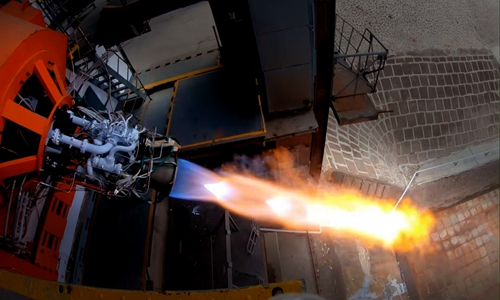
China’s 15-ton reusable liquid oxygen-methane engine JD-1 completed a key secondary start test on Wednesday.
The completion of the test makes JD-1 the first engine of its kind to achieve a restart function and marks a key breakthrough in vertical landing rocket technology, according to a reply sent by the Beijing-based engine developer i-Space to the Global Times on Thursday.
The vertical landing technology has high technical requirements for the rocket’s power system. A core technology allows for the second start of the engine, the engine’s ability to start and work normally in high altitude after its first normal shutdown.
“The reusable rocket has a high demand on its engine, which has to kick off twice during the take-off and landing processes. The test is of huge significance to the development of reusable rockets,”
“It is likely China will be the second country to acquire reusable launch technology after the US,”
The engine is powered with liquid oxygen-methane, a low-cost and clean fuel, and is designed to be used up to 30 times, which can save more than 70 percent in rocket manufacturing costs, according to the developer.
The engine will be assembled onboard the reusable liquid oxygen-methane carrier rocket Hyperbola-2, said a power system engineer with i-Space, noting that the test laid a solid foundation for the launch of the rocket.
The rocket, with a take-off weight of 90 tons, is capable of sending 1.9-ton payloads into low-Earth orbit and is expected to be launched for the first time in 2021.
The next technological breakthrough will be in precise guidance and control technology, and the selection and planning of landing sites.
